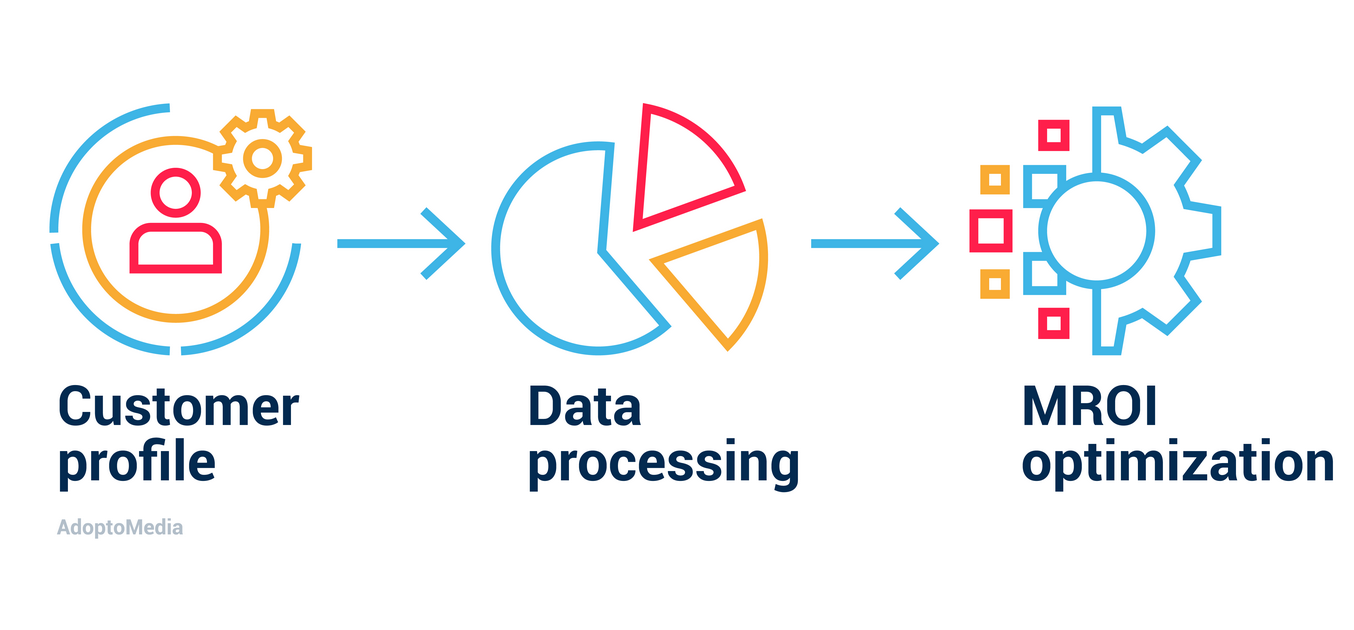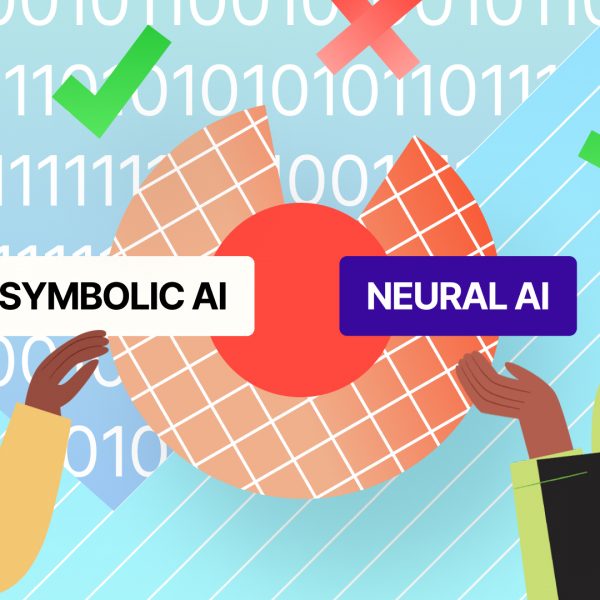
OMR Festival 2019 took place in Hamburg on 12th and 13th of May 2019. This event brought together international stars of the digital marketing, promising new playersб and absolute experts to provide a thorough analysis of relevant marketing trends. Top speakers included the representatives of giants like Adobe, Google, Facebook, McKinsey & Company, etc.
A global management consulting firm, McKinsey & Company, presented its innovative ideas concerning the Marketing Operating Model. They propose an omnichannel, person-based optimization approach that has already proven effective and is expected to save Optus, the second-largest telecommunications company in Australia, $15 million in marketing costs.
To fully understand how this new-generation solution is going to changes the industry, begin by examining the current landscape. One of the biggest challenges marketers face today is measuring Marketing Return on Investment (MROI). In 60% of cases, they are unable to estimate the long-term or short-term impact of their marketing efforts. While various approaches are available to address the MROI question, none are flawless.
- A/B testing is a simple methodology that helps identify incremental impact by comparing two groups: a test group and a control group. It can reveal more successful media tactics and improve performance. However, it is not suitable for tackling more complex tasks or creating a comprehensive strategy.
- Pragmatic Heuristic (RCQ) is a quantitative method which can be applied to different media channels to measure the cost per reach. By using this approach, you can find the most cost-efficient promotional channels and optimize your marketing mix, even in data-poor environments. However, this tool requires too much manual work and is difficult to automate. Another disadvantage is that it is not completely objective.
- Consumer surveys are used to measure customer loyalty and brand awareness, and obtain customer demographics. However, survey data is not absolutely reliable or objective due to the human factor.
- Marketing Mix Modeling (MMM) shows incremental impact of all marketing activities. It’s a great tool for optimizing marketing budgets and balancing online and offline campaigns, but it cannot show the effects of creative elements or messages that potential customers view. Additionally, older versions of MMM lack granularity and tend to be more backward-looking. In advanced versions of MMM, some of these weaknesses have been addressed. You can read in more detail about advantages and disadvantages of MMM in this article.
- Multi Touch Attribution (MTA) is highly granular and perfect for capturing digital a customer’s digital journey. However, it has a short-term focus; if more than two weeks pass between the first touchpoint and the conversion, MTA may regard the interactions as belonging to two different customers, as it retains information about the customer’s digital journey for only 2-3 weeks. Additionally, MTA is limited by the restrictions on third-party cookies and the IDFA, which further impacts its ability to track and accurately attribute customer interactions over longer periods. Furthermore, MTA does not account for incremental sales and may assign excessive credit to digital media.
- MMM + MTA models make up for some drawbacks of each method, by adding incrementality to MTA and digital granularity to MMM, but it’s not a single model and they require complex implementation one after the other. It also doesn’t focus on upper funnel and creative.
The main drawbacks of existing methods:
- They are backward looking and do not provide real-time data or allow for mid-campaign adjustments;
- They do not take into account creative or message ROI focusing only on media spend;
- They lack granularity;
- They are too short-term focusing only on sales and neglecting upper funnel;
- It takes too long before insights bring about changes.
And the real problem is lack of data.
McKinsey advises the following 5 methods to optimize marketing and increase your revenue by 2-5%:
- Optimize media budget distribution across different markets, products.
- Choose the best performing creative or message for every target group.
- Effectively distribute media budget across different channels.
- Make sure to use every tool or channel to your best advantage.
- Never use unverified content, media, tools or services.

What exactly this transition means?
| This generation |
|
Optimization based on aggregate data sets, with granular information available only for digital media |
|
Focus on mass-communication |
|
Focus on media spend |
|
Optimizing only towards the bottom of the funnel (sales) |
|
Mostly backward-looking |
| Next generation |
|
Granular optimization based on person-level data sets for both online and offline media |
|
Focus on specific segments |
|
Considers not only media spend but also content/creative |
|
Works with both upper and lower funnel objectives (brand to performance) |
|
Almost real-time data allows for mid-campaign optimization |
| This generation | Next generation |
|
Optimization based on aggregate data sets, with granular information available only for digital media |
Granular optimization based on person-level data sets for both online and offline media |
|
Focus on mass-communication |
Focus on specific segments |
|
Focus on media spend |
Considers not only media spend but also content/creative |
|
Optimizing only towards the bottom of the funnel (sales) |
Works with both upper and lower funnel objectives (brand to performance) |
|
Mostly backward-looking |
Almost real-time data allows for mid-campaign optimization |
Instead of merely understanding a customer’s digital journey, we will gain insights into their entire journey across both online and offline media channels. This will enable us to attribute the impact on sales conversions across different channels more effectively.
What needs to be done?
The idea may sound attractive, but its successful implementation requires significant changes. Apart from introducing necessary tools such as data integration, advanced analytic algorithms, and specialized software that allows for the cancellation of ad placements or changes to the media mix at any time, companies will also need to evolve to enable the new system to function properly.
With a constant flow of processed granular data, companies will need experts capable of making decisions based on this data to optimize marketing campaigns and allocate media budgets. Another important aspect that needs to change is the cooperation between advertising agencies and clients. It is essential to establish partner agencies so that they operate as a cohesive unit rather than as two separate systems, where correspondence takes weeks and contract terms cannot be changed. This new approach should allow for prompt responses, flexible conditions, transparent data sharing, and the possibility of mid-campaign optimization. Some companies have already begun this transition. For example, one of the world’s biggest advertisers, Procter & Gamble, saved $750 million after setting up an in-house agency in the wake of the transparency scandal.
McKinsey recommends gradually implementing this system now, despite the existing obstacles and the lack of verified data. They believe that over the next few years, the business landscape will change and align with your needs.
There are four barriers to implementation of the system today:
- There is simply not enough data.
- GDPR (General Data Protection Regulation) – strict legal requirements forbidding sharing of private information is a major obstacle.
- Constraining relations with agencies – there needs to be more transparent data sharing between agencies and customers, as well as more flexible agreements allowing mid-campaign decision-making and adjustments.
- Lack of personnel with new skills and expertise – we need people capable of processing granular data and making decisions on a regular basis.
It’s worth mentioning that despite operating at individual-level granularity Next Generation MROI follows privacy and legal requirements through aggregating or encrypting data. They also use opt-in questions by answering which customers allow to merge and analyze their data, and the system prevents re-identification of individuals.
Implementing this progressive tool requires boldness, a strong team of visioners who are ready to work hard and a right partner. And what you get is accelerated decision making, optimization of all media channels, in-campaign adjustment and increased revenue.
We can also offer product for media mix optimization, which has already been successfully implemented in large companies across Western and Eastern Europe, Latin America and the Middle East. It’s an advanced MMM tool combined with AI that can measure the contribution of each channel to the product sales, using aggregated weekly data, ensuring compliance with all privacy regulations. Try AdoptoMedia to automatically generate an effective media mix, run “what-if” scenarios, and optimize budget allocation. Our solution allows you to create a smart media plan and increase ROMI (return on marketing investments) by 15-30%.


